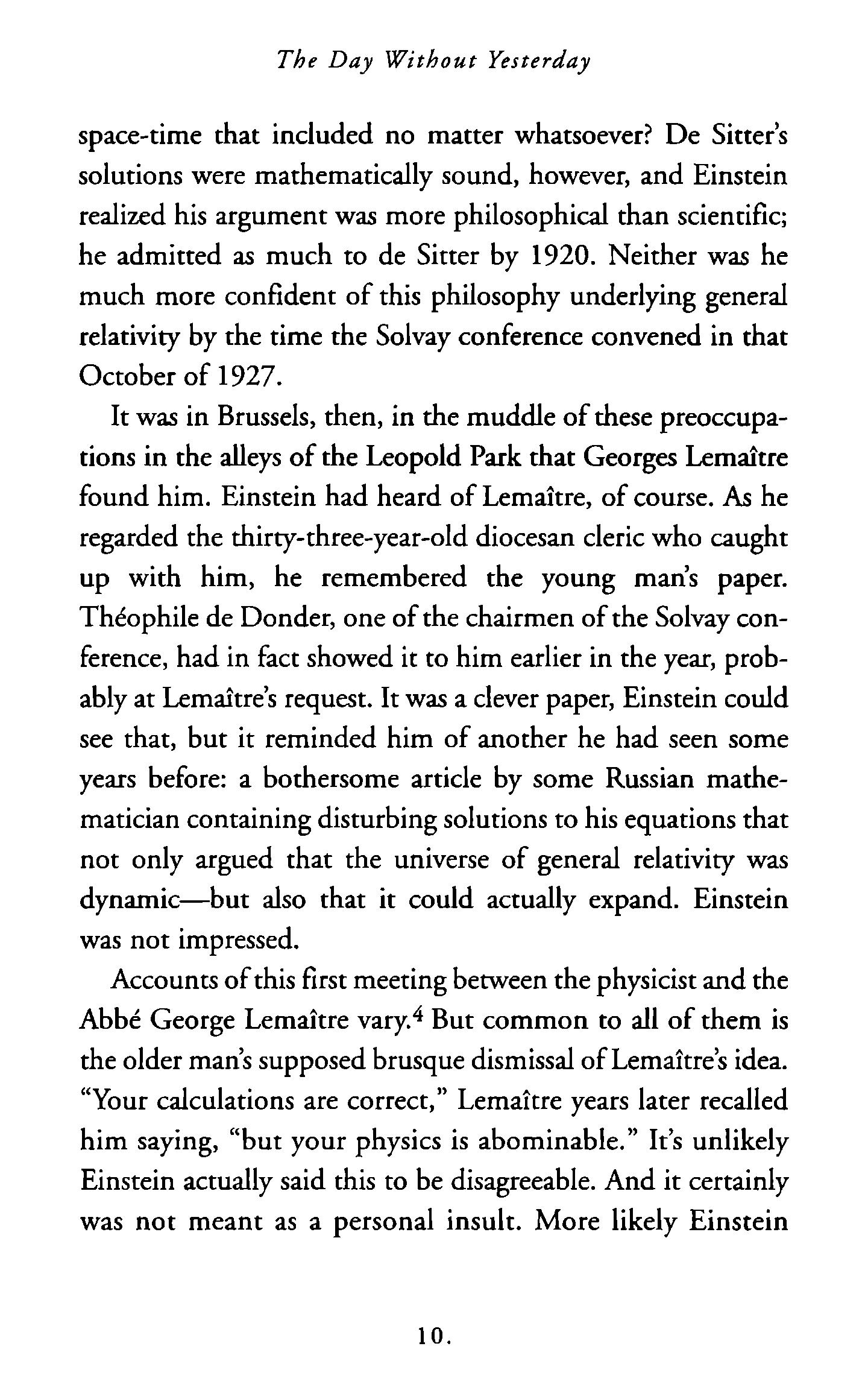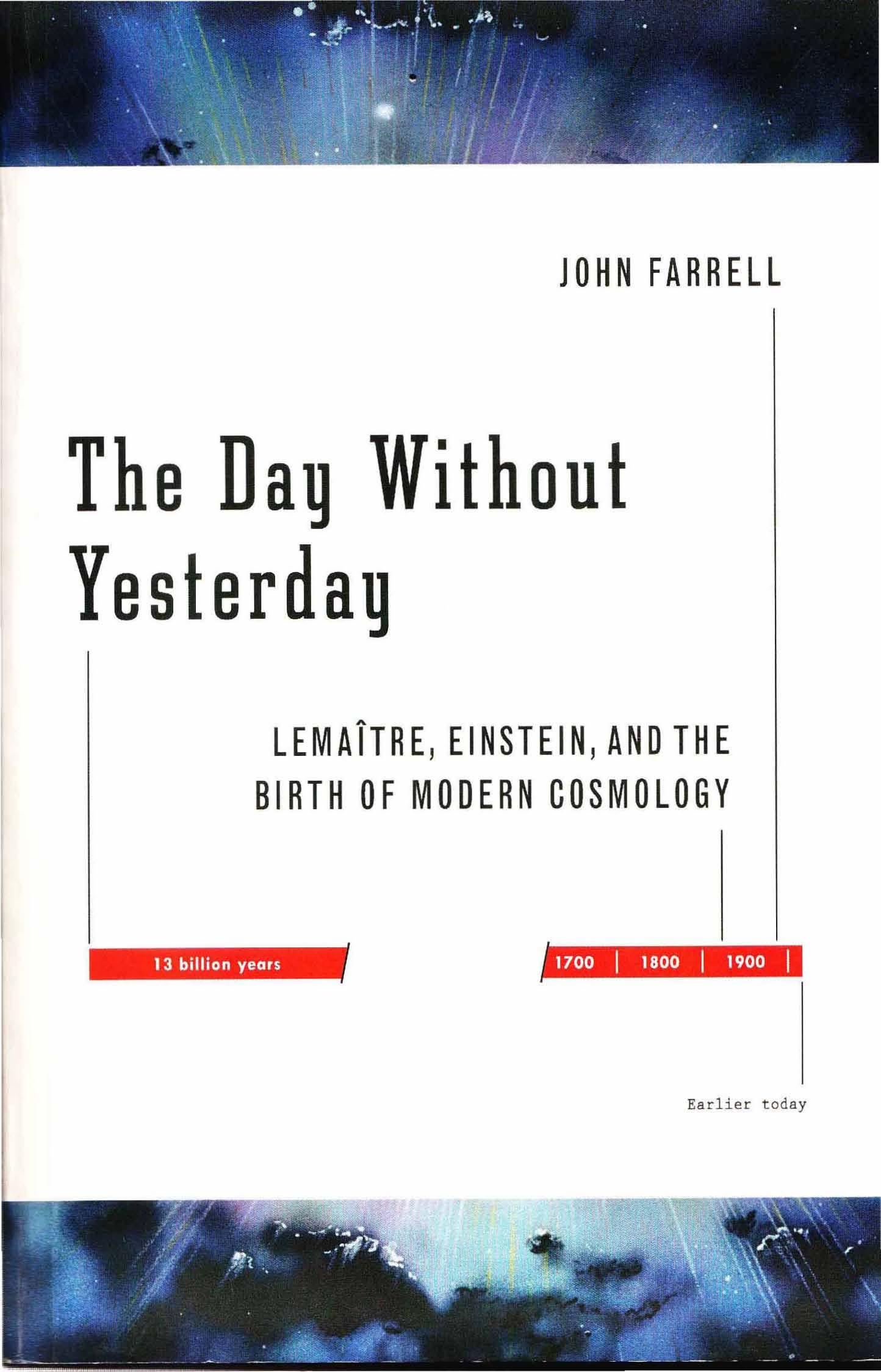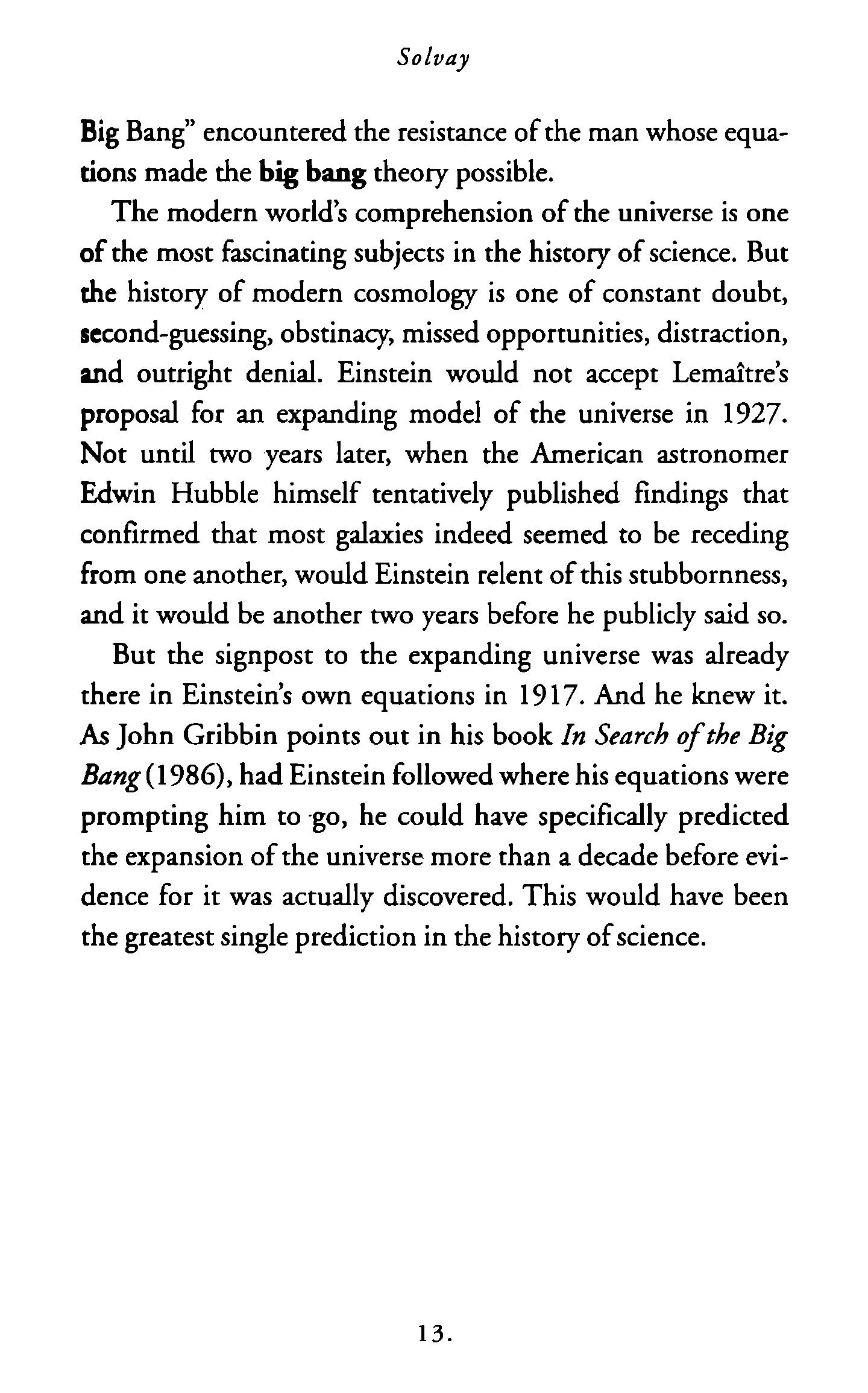https://ebookmass.com/product/the-day-without-yesterday-by-
Instant digital products (PDF, ePub, MOBI) ready for you
Download now and discover formats that fit your needs...
My Name is Vlolence (1959) by John Mattews Desconocido
https://ebookmass.com/product/my-name-is-vlolence-1959-by-johnmattews-desconocido/
ebookmass.com
Eat Without Fear: Harnessing Science to Confront and Overcome Your Eating Disorder Nicholas R. Farrell
https://ebookmass.com/product/eat-without-fear-harnessing-science-toconfront-and-overcome-your-eating-disorder-nicholas-r-farrell/
ebookmass.com
The Utopian Dilemma in the Western Political Imagination
1st Edition John Farrell
https://ebookmass.com/product/the-utopian-dilemma-in-the-westernpolitical-imagination-1st-edition-john-farrell/
ebookmass.com
The Palgrave Handbook of Diplomatic Reform and Innovation
Paul Webster Hare
https://ebookmass.com/product/the-palgrave-handbook-of-diplomaticreform-and-innovation-paul-webster-hare/
ebookmass.com
Der kleine Plattenladen am Meer (German Edition) Daisy Hill
https://ebookmass.com/product/der-kleine-plattenladen-am-meer-germanedition-daisy-hill/
ebookmass.com
The Rise of Neo-liberalism and the Decline of Freedom 1st ed. Edition Birsen Filip
https://ebookmass.com/product/the-rise-of-neo-liberalism-and-thedecline-of-freedom-1st-ed-edition-birsen-filip/
ebookmass.com
Debt Markets and Investments H. Kent Baker (Editor)
https://ebookmass.com/product/debt-markets-and-investments-h-kentbaker-editor/
ebookmass.com
Pygmalion, Heartbreak House, and Saint Joan George Bernard Shaw
https://ebookmass.com/product/pygmalion-heartbreak-house-and-saintjoan-george-bernard-shaw/
ebookmass.com
Cambridge IGCSE® & O Level Essential Biology: Third edition Richard Fosbery
https://ebookmass.com/product/cambridge-igcse-o-level-essentialbiology-third-edition-richard-fosbery/
ebookmass.com
Monarchies and the Great War 1st ed. Edition Matthew Glencross
https://ebookmass.com/product/monarchies-and-the-great-war-1st-ededition-matthew-glencross/
ebookmass.com
JOHN FARRELL
The Day Without Yesterday
THE DAY WITIlOlff YESTERDAY Lnnaitre, Eimtein, and the Birth ofModem Cosmology
Published by Thunder's Mouth Press
An Imprint of Avalon Publishing Group Inc. 245 West 17th St., 11 th Floor New York, NY 10011
Copyright © 2005 by John Farrell
First printing October 2005
All rights reserved. No part of this publication may be reproduced or transmined in any form or by any means, electronic or mechanical, including photocopy, recording, or any information storage and retrieval system now known or to be invented, without permission in writing from the publisher, except by a reviewer who wishes to quote brief passages in connection with a review written for inclusion in a magazine, newspaper, or broadcast.
Library of Congress Cataloging-in-Publication Data is available.
ISBN 13: 978-1-56025-660-1
ISBN: 1-56025-660-5
987654321
Book design by Maria Elias
Printed in the United States of America
Distributed by Publishers Group West
AVALON
For Carmen
ACKNOWLEDGMENTS

ANY TREATMENT OF the life and work of Georges Lemaitre must come to grips with the enormous amount of papers and other material he left at the time of his death in 1966. Many people were of invaluable help in the writing of this book and I cannot thank them enough. Among them are Liliane Moens of the Lemaitre Archive at the Institut d'Astronomie et Geophysique G. Lemaitre at Catholic University of Louvain in Belgium, where Lemaitre's papers are collected; Dominique Lambert, professor of astrophysics and philosophy of science on the faculty of Notre Dame de la Paix University, whose extensive biography of Lemaitre, Un Atome d'Univers, published in 2000, was a critical source of detail about Lemaitre's personal life; Dan Lewis, curator of science and technology at the Huntington Library, Art Collections, and Botanical Gardens in San Marino, California; Professor Herman Bondi, the last surviving member of the trio of Bondi, Hoyle, and Gold, which produced the celebrated steady state theory, for sharing his fond personal memories of his meetings with Lemaitre in the v.

early 1950s; the excellent staff of the John G. Wolbach Library at Harvard's Smithsonian Center for Astronomy and Astrophysics: Donna Coletti, Melissa Hilbert, William Graves, Amy Cohen, Maria McEachern, and Barbara Palmer, for their help in tracking down now long-forgotten and obscure papers on Lemaitre during his visits to the United States, and for their patience over the many months when several large bundles of books went missing from their shelves; Professor Steve Carlip of University of California-Davis for his patient and thoughtful responses to my questions; David Layzer, professor emeritus of astronomy and astrophysics at Harvard University, for his feedback on the manuscript; Barbara Wolff, librarian at the Albert Einstein Archives, Jewish National & University Library; John Grula, librarian at the Carnegie Observatories in Pasadena, California; my parents for their continuous encouragement and support of my writing career; my editor, John G. H. Oakes, of Thunder's Mouth Press for giving me a great opportunity to write about the long forgotten figure of big bang cosmology; Hilary Hinzmann for his editorial help; my agent, Susan Schulman, for her tireless efforts on my behalf; Mary Farrell for proofreading translated material; and, finally, my wife Carmen and my children for their understanding and generous support during the writing of this book.
Any errors or omissions to be found in the following text are entirely the fault of the author. VI.
If I had to ask a question of the infallible oracle I think I should choose this: "Has the universe ever been at rest, or did the expansion start from the beginning?" But, I think, I would ask the oracle not to give the answer, in order that a subsequent generation would not be deprived of the pleasure of searching for and of finding the solution.
Georges Lema£tre, during a discussion ofcosmology before the British Association for the Advancement ofScience
1. SOLVAY
We can compare space-time to an open, conic cup The bottom of- the cup is the origin of atomic disintegration; it is the first instant at the bottom of space-time, the now which has no yesterday because, yesterday, there was no space.
Georges Lemattre, The Primeval Atom
NO ONE KNOWS for certain the exact day of that week in October 1927 when Albert Einstein ran into the round-faced Catholic priest. If it was Wednesday, then it was a few days after the new moon. The weather in Brussels may have been raw, and the forty-eight-year-old Einstein was probably in no 1.
The Day Without Yesterday
mood to discuss his work with strangers, least of all strangers wearing Roman collars. But that is what happened.
The Fifth International Solvay Conference on Physics ran from Monday, October 24, through Saturday, October 29. Over a week's time Einstein would have ample opportunity to meet the many other physicists who had come to the Belgian capital. On Wednesday, October 26, for example, Einstein could probably be found in one of the meeting rooms of the Institute of Physiology in Brussels, or perhaps not too far from there at the Hotel Metropole, a plush resort built by the wealthy Wielmans-Ceupens family just before the turn of the century. The spacious rooms were an admirable retreat for scientists spending most of their mornings and afternoons in drab lecture halls.
In the event, Einstein was strolling in the alleys of Leopold Park one day during the conference with a former student of his, August Piccard. Piccard, a tall, dark-haired man with a broad forehead, can be seen standing behind the other members in a familiar picture of Solvay taken during the 1927 conference and reproduced in many Einstein biographies. Piccard had written his PhD thesis at the University of Berlin, and Einstein had acted as principal co-examiner of the paper for him.l
Piccard was happy to take advantage of the conference to see his old mentor again. The last Solvay conference had been held in Brussels in 1924, just three years earlier. But Einstein had boycotted it in solidarity with the German scientists who had not been allowed to attend (so soon after the 2.
end of hostilities, and with feelings on the Belgian and French side still being raw). Now he was here to listen to many of the most illustrious physicists of the day discussing the new quantum theory in papers presented under the conference topic "Electrons and Photons." As common as this topic might sound, electrons and photons were very new objects to scientists in the first quarter of the twentieth century. And the model of the subatomic realm that they were constructing to accommodate these particles was becoming controversial.
Einstein himself was not delivering a paper on that subject or any other, in spite of being invited to do so by the conference chairman (and his close friend), the Dutch physicist Hendrik Antoon Lorentz. Indeed, it seemed to everyone attending the conference that Einstein's role in the proceedings was unusually passive; he was apparently allowing the direction of the development of quantum mechanics to be guided by the Danish physicist Niels Bohr, the young German Werner Heisenberg, and other enthusiastic proponents of this new branch of physics. For many of his friends and contemporaries, such as Max Born and Bohr, this seeming resignation on Einstein's part was a disappointment, but not an entirely unexpected one.
During the past few years, Einstein had grown increasingly uneasy with quantum mechanics, a branch of physics that he had helped to discover in 1905 when he published the four papers that made him famous. In particular, his paper on the "photo-electric effect" described light in terms of little energy packets or particles, called "photons." Up until that time, 3.
physicists had accepted the nineteenth-century Vlew that electromagnetic radiation traveled in waves, like ripples across the surface of a pond. They had also assumed that energy radiated in a continuous spectrum, from hot to cold. They were puzzled when in 1900 Max Planck revealed that it did not--energy radiated in very discrete bundles, which, for lack of a better word, the German physicist called "quanta." In 1905 Einstein made use of this new model to describe the behavior oflight dislodging electrons from a metal surface the way a cue ball scatters a set of balls on a pool table.
But that was well over twenty years ago now. Einstein had little idea then that his paper on the photoelectric effect would become one building block of a new physics that would describe the entire subatomic world in terms of particles and waves, without ever choosing one definitively over the other as the ultimate model of reality. This new physics would also settle for a description of the subatomic world that depended on the laws of probability and chance rather than strictly determined laws of mechanics, such as those governing the mechanics of Isaac Newton. Einstein felt he could not accept this subjection of atomic physics to statistics and chance, and made one of his most famous quotes in sizing up his feelings when he said, "God does not play dice with the . " Ufllverse.
By 1927 Einstein had come to a watershed. He had been working for some time on a unified field theory, one that he hoped could explain both the laws of gravitation and the laws of electrodynamics in a grand cohesive design. He was willing
to grant that the statistical approach to describing quantum interactions was definitely useful, but he did not accept Heisenberg's principle of uncertainty, which the young German physicist had published that year with the approval of Niels Bohr. Nor did he accept Bohr's principle of complementarity and what the Danish physicist declared that quantum physics implied about the world.
Heisenberg insisted that the principle of uncertainty was fundamental in nature. It was not merely a limitation of scientific instruments that prevented the accurate, objective determination of a particular electron's momentum or position, he argued. There simply wasn't any objective momentum or position that existed for that particle in principle-until it was measured. To Einstein, this was rather like saying there was no such thing as a thread in the fabric of your coat until you dug a needle into the texture and tore one out to see what it looked like under a magnifying glass. Suddenly the scientist was inextricably bound up with the very target of his or her experiment, and the results of this experiment depended more on what the experimenter wanted to measure than any objective target in and of itself This struck Einstein as absurd.
But Bohr carried this implied subjectivism even further with his principle of complementarity. He argued that the subatomic world could be discussed in dual terms-that of waves or of particles-but that an experiment to reveal one such nature of a subatomic system would not also reveal its other nature. Einstein's work on the photoelectric effect 5.
indeed described light in terms of discrete particles, photons, but Erwin Schrodinger had developed a model of quantum physics just as reliable as Heisenberg's by describing energy and matter in terms of waves. And it worked. Bohr argued that both approaches were equally valid. The quantum world was one of both waves and particles. To Einstein, these statements were more than scientific principles. They amounted to sheer philosophizing as far as he was concerned and simply could not be accepted as the final word on the physics of atomic processes.
Although no one knew it at the time, this 1927 Solvay conference was to be the opening salvo of a number of ongoing and heated debates between Albert Einstein and Niels Bohr on the subject of determinism in quantum physics. The debates, always friendly but intense, would become famous and form the subject matter of many books. 2 In the eyes of most of his peers, Einstein ultimately lost those debates. Einstein maintained that the world was an objective reality independent of the thoughts and attitudes of scientists and everyone else living in it. This reality had to be determinable, and there had to be a scientific model that would completely describe the microcosmic world of the atom as thoroughly and objectively as his own general theory of relativity or the mechanics of Isaac Newton described the macrocosmic world of gravitation. But to his discomfort, Einstein soon realized that his general theory of relativity was beginning to evince its own set of troubling characteristicscharacteristics he had not anticipated. That was another part 6.

of the problem for the physicist at Solvay, part of the reason for his preoccupation: his own grand theory of gravity was becoming unruly. The theory of general relativity was beginning to suggest disturbing ramifications about cosmology, the study of the universe as a whole, and these matters were also begging for attention-an attention Einstein did not feel motivated to give. In spite of his attempts to remain lighthearted at the conference, and several friends reported later that outside of the presentations of papers the great physicist was more his outgoing self,3 the nagging sense nevertheless lingered for him: that he had made a mistake somewhere in his equations for general relativity.
As a system, general relativity is at its heart a geometric theory, a theory that describes the entire world in terms of geometry. Unlike the classic Euclidean geometry that children learn in grade school, that of parallel lines that never meet and triangles whose sides can never add up to more than 180 degrees, the geometry of Einstein's general relativity is the non-Euclidean geometry derived by the nineteenth-century German mathematician Bernard Riemann. It is the geometry of the sphere, the geometry of curved space. In Einstein's theory, the curvature of space (or, to be more precise, the curvature of space-time, the combination of them required by the theory) is determined by the presence of matter and energy. This is radically different from Newton's classical theory of gravity as a universal force that depended on mass alone. In Einstein's theory, objects move along curved paths determined by the presence of matter and energy; as physicist

John Archibald Wheeler once wrote, matter tells space-time how to curve, and space-time tells matter how to move.
Once Einstein had completed the system of field equations for his general theory of relativity, he realized they could apply to the world as a whole. The theory had certain cosmological consequences, once you made a few key assumptions, and it was possible to construct consistent world models using the equations. Einstein himself tried this for the first time in 1917. But other physicists soon followed, and some of the models they suggested using his theory did not only not appeal to Einstein, but they also seriously prompted him to reconsider whether he had a made a fundamental mistake somewhere in his system.
But where? More than likely, he was coming to realize, it was with what he referred to as the cosmological constant. Denoted by the Greek letter lambda, A, Einstein invented the cosmological constant as a sort of buttress, a number he had insisted on inserting into his field equations for gravity in order to construct a model of the world as a closed system, spherical, and in perfect equilibrium-not changing over time. This was the way people of the early twentieth century thought of the universe, as a placid, unchanging system. Nevertheless, Einstein noticed early on that his pure equations would not support such a model without some help. The pure equations of general relativity suggested at the outset that a model of the universe would be unstable. The universe of matter and energy would collapse in on itself under the weight of its own gravitational mass, like a balloon quickly

running out of air. Obviously this had not happened, the universe was not collapsing according to data from astronomers at the time. So, for the sake of his theory, Einstein felt compelled to offset any possible instability by reinforcing his solutions with a cosmological constant, a factor that acted as a cosmic repellant to the force of gravity, a sort of antigravity that stabilized the world on the large scale of the universe as a whole. It does not appear from available correspondence that it occurred to Einstein that instead of collapsing, the universe his equations described might be expanding, like a balloon filling up with air. In any case, in order to preserve this static equilibrium in his model of the universe (which at the time he thought was the only solution), he had to prop it up with A.
That was not the end of his worries, however. Shortly after publishing his cosmological solution in 1917 Dutch astronomer Willem de Sitter examined Einstein's equations and raised another problem, one that would lead to a long controversy between the two colleagues. Among other issues, de Sitter suggested that Einstein's theory could support a spatially flat model of the universe that could be completely empty, without any matter whatsoever. Einstein challenged this view, publishing several papers in response as de Sitter countered with his own. Such a universe could not be possible in his theory, according to Einstein. A universe empty of matter? It would fly in the face of one of Einstein's most cherished principles: that matter itself is what defines the curvature of space-time. How could there be such a thing as

space-time that included no matter whatsoever? De Sitter's solutions were mathematically sound, however, and Einstein realized his argument was more philosophical than scientific; he admitted as much to de Sitter by 1920. Neither was he much more confident of this philosophy underlying general relativity by the time the Solvay conference convened in that October of 1927.
It was in Brussels, then, in the muddle of these preoccupations in the alleys of the Leopold Park that Georges Lemaitre found him. Einstein had heard of Lemaitre, of course. & he regarded the thirty-three-year-old diocesan cleric who caught up with him, he remembered the young man's paper. Theophile de Donder, one of the chairmen of the Solvay conference, had in fact showed it to him earlier in the year, probably at Lemaitre's request. It was a clever paper, Einstein could see that, but it reminded him of another he had seen some years before: a bothersome article by some Russian mathematician containing disturbing solutions to his equations that not only argued that the universe of general relativity was dynamic-but also that it could actually expand. Einstein was not impressed.
Accounts of this first meeting between the physicist and the Abbe George Lemaitre vary.4 But common to all of them is the older man's supposed brusque dismissal of Lemaitre's idea. "Your calculations are correct," Lemaltre years later recalled him saying, "but your physics is abominable." It's unlikely Einstein actually said this to be disagreeable. And it certainly was not meant as a personal insult. More likely Einstein 10.

applied "abominable" to the concept of expanding space, because it is essentially the reaction he had to the paper written in 1922 by the Russian mathematician when the whole idea was first brought to Einstein's attention. He simply refused to even consider the idea of an expanding universe at that time. Instead, he told Lemaitre that Alexander Friedmann, a Russian mathematician, had already proposed the same idea in 1922, submitting a paper to Zeitschrift for Physik called "On the Curvature of Space," using Einstein's equations to describe the first model of an expanding universe. Friedmann had since died in 1925, without ever having followed up on his initial papers. And being a mathematician rather than a physicist, he had offered his ideas purely on theoretical grounds and had not shown the slightest interest in looking for observational data that might support or contradict his theory. After quibbling with some points about Friedmann's mathematics, Einstein was content to let the matter rest without offering to prove that such an expanding universe was not possible, as he believed. No one else picked up on the idea until Lemaitre rediscovered it.
But by 1927 Lemaitre had gone considerably further with the theory of expanding space than Friedmann or anyone else ever had. He had already spent a year in Cambridge, England, studying general relativity with Sir Arthur Stanley Eddington. Eddington was the first champion of Einstein's general theory of relativity in England. He was also worldfamous for finding what was considered the decisive proof of the theory at the time, with his dramatic expedition to the 11.

island of Principe. In 1919 he took photographs there of a solar eclipse that revealed the bending of starlight in the vicinity of the sun, a deflection that matched predictions Einstein had made with his equations. In 1924, when Lemaitre came to Cambridge, Eddington was much impressed with the latter's work and encouraged him in his research. Lemaitre then spent another year in Cambridge, Massachusetts, studying spiral nebulae with the American astronomer Harlow Shapley, who had used the sixty-inch telescope on Mount Wilson to map the Milky Way. Already indications from these distant sources suggested that the far-flung objects seemed to be mysteriously receding in space. Lemaltre believed that such a recession of nebulae was at least preliminary evidence that in fact the universe did correspond to an expanding cosmological model. He had specifically written his 1927 paper with the latest astronomical data in mind. No one would appreciate this for another three years. Far from being put off by Einstein's dismissal, the priest believed Einstein simply did not have any of the astronomical data at hand to change his mind.
And when Lemaitre accompanied Piccard and Einstein that day to visit Piccard's lab at the University of Brussels, Lemaitre brought up the subject of spiral nebulae and recent measurements of their redshifts made by American astronomers to bolster his theory about the expansion of the universe. According to his later recollection in a radio address, Lemaltre said Einstein did not seem to be aware of any of these facts. 5 Thus the man who would become known as the "Father of the 12.
Big Bang" encountered the resistance of the man whose equations made the big bang theory possible.
The modern world's comprehension of the universe is one of the most fascinating subjects in the history of science. But the history of modern cosmology is one of constant doubt, second-guessing, obstinacy, missed opportunities, distraction, and outright denial. Einstein would not accept Lemaitre's proposal for an expanding model of the universe in 1927. Not until two years later, when the American astronomer Edwin Hubble himself tentatively published findings that confirmed that most galaxies indeed seemed to be receding from one another, would Einstein relent of this stubbornness, and it would be another two years before he publicly said so.
But the signpost to the expanding universe was already there in Einstein's own equations in 1917. And he knew it. As John Gribbin points out in his book In Search of the Big Bang (1986), had Einstein followed where his equations were prompting him to -go, he could have specifically predicted the expansion of the universe more than a decade before evidence for it was actually discovered. This would have been the greatest single prediction in the history of science.
2. OUT OF THE TRENCHES
GEORGES EDOUARD LEMAlTRE, sometimes referred to as the "Father of the Big Bang," and sometimes less politely as the "Big Bang Man," was born on July 14, 1894, in the Belgian town of Charleroi, about 173 miles northeast of Paris. This was almost exactly twenty years before the onset of what would be known as the Great War. Charleroi was a comparatively recent home for the Lemaltre family, which had its roots in Courcelles, to the west of the Belgian mining town, where the Lemaitres had lived for over two centuries. Young Georges came from a line of men and women who worked with their hands-as weavers and coalminers. Lemaltre's great-grandfather, Clement, had served in Napoleon's 112th 15.
Lemaitre at 8 months, March 1895. Photo courtesy of the Archives Lemaitre, Institut d'Asrronomie et de Geophysique Georges Lemaitre, Catholic University Louvain.
Line and, according ro family hisrory, was twice wounded. Demobilized after Waterloo, he retained a devoted loyalry to the exiled leader ever after. But his military career continued, as he became a lieutenant in the Belgian Civic Guard on May 29, 1831, as well as a successful merchant. Clement was married three times, indeed marrying two sisters-one after the other died. His son Edward-Severe became managing direcror of the Bonne-Esperance Sociery of Coli aries before becoming a wood merchant. He in his turn had six children.
The youngest of these, Joseph, was born in October of 1867 and came from the first generation of Lemaitres to complete a universiry education. He studied law, and although he became 16.

an accredited lawyer, he did not practice at first. Instead he formed his own business and invented a new procedure to "stretch" glass, one that would prefigure the later methods successfully employed to this day by the European Glaverbel glassware company. When he was twenty-six, Joseph Lemaitre married a local woman, Marguerite Lannoy, and they started a &mily, ultimately raising four sons. In spite of his early success, Joseph Lemaitre did not last in the business of invention. A fire devastated his factory, and he was forced to change careers in middle age. Because his company had not been insured, he borrowed money from his cousins to pay his debts and to pay his laid-off employees. His reputation for honesty and sense of social justice as a scrupulous employer spread to Brussels. Impressed by the concern he showed for his business and workers, the Society of Brussels invited Joseph to work for them as a legal consultant to their bank, and in October 1910 he moved his family to Belgium's capital to begin a second career.
By this time, joseph Lemaitre's eldest son, Georges, had already exhibited a facility with mathematics, as well as an interest in theology. Neither displeased his parents, as they were devoted Catholics. But as for making any decision about the boy's future, Joseph Lemaitre neither encouraged nor discouraged the nine-year-old Georges when he first told his father he wanted to become a priest. The story is noteworthy, as some later accounts, including one by Lemaitre's longtime assistant, Odon Godart, suggested Lemaitre entered the seminary out of reaction to his brutal experiences in World War 1. 6 But it seems the future cosmologist's religious inclination 17.
emerged early on. This does not contradict the likelihood that the horrors Lemaitre witnessed in the service as an artillery sergeant may have deepened his sense of vocation.
Like many men of his generation, George Lemaitre was born in a year that put him on a direct path toward the trenches. Other key figures in the history of twentieth-century cosmology would also find themselves on the battlefield and, had it not been for the war and its aftermath, might have lived to make even more important contributions to the science. For example, German astronomer Karl Schwarzschild, who provided the first exact solution to Einstein's general relativity equations in 1916, died of a war-related illness shortly after returning from the Eastern front. Alexander Friedmann, being Russian, was on the opposite side of the front. He would be the first to show in mathematical terms that cosmological models in Einstein's theory should be dynamic. Friedmann also suffered ill health because of his hardships during the war. He finally succumbed to complications of an illness contracted after he conducted a meteorological survey in a weather balloon as a professor for the new Soviet Petrograd University (later renamed Leningrad) in 1925. Fortunately, the American astronomer Edwin Hubble, who would discover the evidence of the galaxies receding into space as Einstein equations suggested, was spared. He entered the war when the fighting was all but over, serving briefly in the American army in Europe.? It's quite possible that had Schwarzschild and Friedmann lived, they, and not Lemaitre, would have been credited more with the discovery of the 18.






































